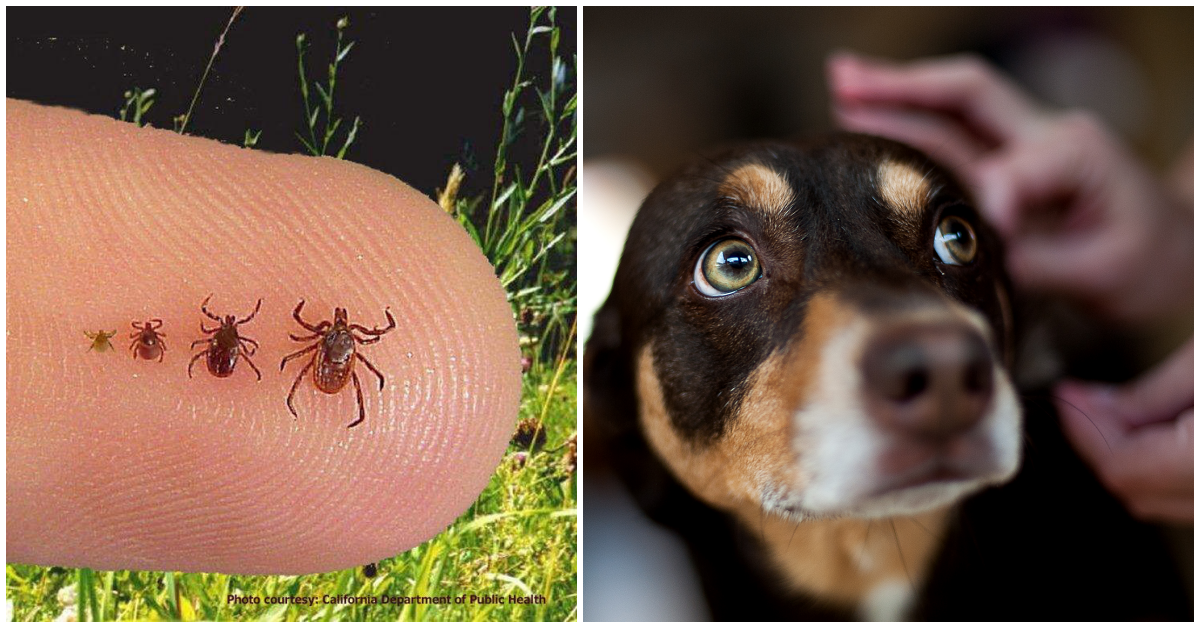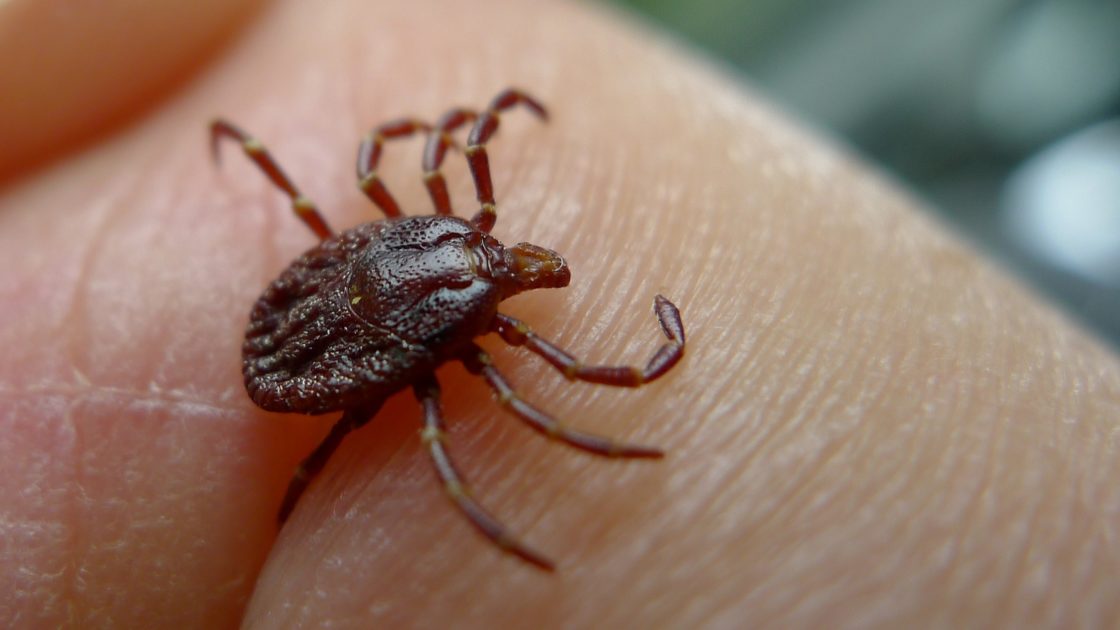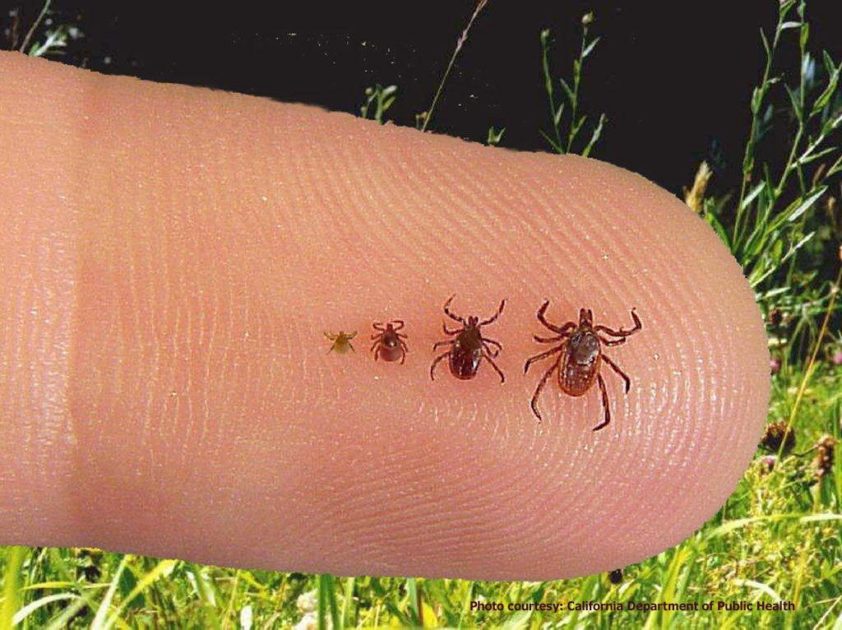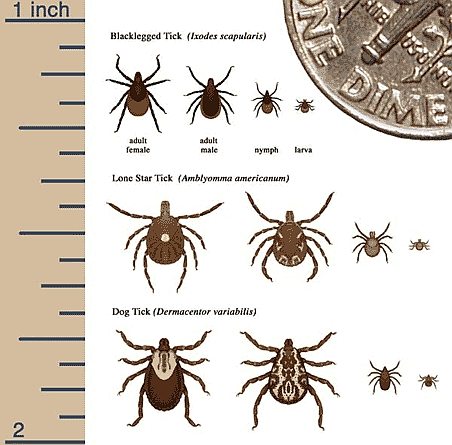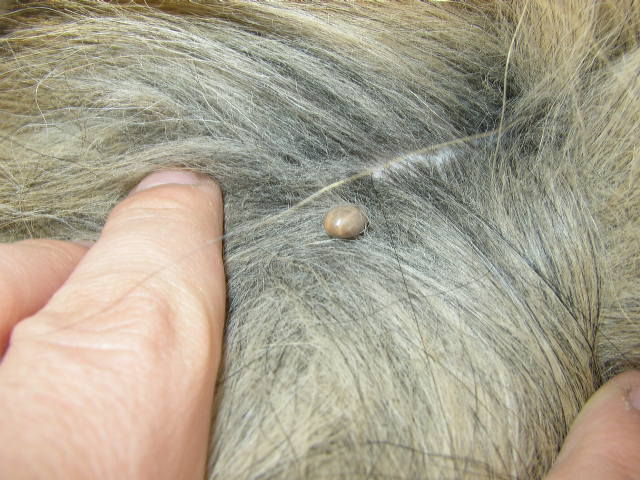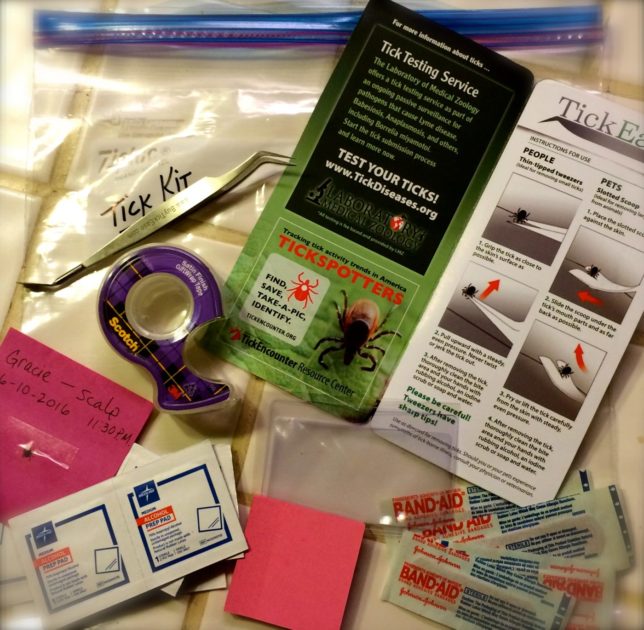Ticks are disgusting. They burrow their tiny heads into your skin to feed on you like vampires. What you need to understand is:
1. You do not have to be outdoors often to get bit
2. Your dog doesn’t have to be outside often to get bit AND…
3. Removing ticks the right way is extremely important in protecting your entire family from tick-borne illnesses.
I’ll say it again: You do not have to be an active, outdoorsy person to contract a tick-borne illness and neither does your dog. It only takes a matter of seconds for a tick to attach itself– and once it does, a number of illnesses can be transferred to you. Some of which are potentially fatal to you and your dog!
These pesky critters can pass diseases from other mammals to humans. Research scientist Goudarz Molaei explains to CNN that up to 15 diseases can be passed to humans (OR to dogs) from three different species of ticks: the Deer Tick, the Lone Star Tick, and the Dog Tick.
The most threatening, however, is the Black-Legged Tick. It’s responsible for the transmission of at least five disease agents: Babesiosis, Anaplasmosis, Borrelia Miyamotoi, Powassan Virus and Lyme Disease.
Lyme’s is the most common tick-borne illness with over 30,000 new cases of Lyme’s Disease reported every year, according to the CDC. And with rising winter temperatures, that number is expected to grow.
While early Lyme’s symptoms usually include moderate fever, chills, mild to severe muscle aches and pains, and rashes– they can worsen causing widespread inflammation of the nervous system.
Lyme’s is most successfully treated early on YET ticks are so darn small to the human eye that the disease often goes untreated. Not to mention the early symptoms can mimic an average virus or flu.
If Lyme’s is treated early on with antibiotics, your chances for a full recovery increase drastically. Same goes for your dog!
According to the Pet Health Network:
“In severe cases, dogs may also develop heart disease, central nervous system disorders, or often-fatal kidney disease.”
Also, your dog cannot tell you how he is feeling. If his joints hurt, and he’s limping around, you may think it’s from a minor injury from overexertion.
Always check yourself and your dog after going outside. Especially in these areas:
- Where woods or fields meet lawn
- Wooded areas
- Tall grass
- Under leaves
- Under ground cover like short plants
- Around stone walls and woodpiles where small mammals live
Being bit by a tick can have catastrophic consequences. Having a tick kit on hand can be your saving grace.
According to Shareably, your kit should include:
- band-aids
- sharply pointed tweezers
- antiseptic wipes
- antibiotic ointment
- small container with label or tape and post-it notes
REMEMBER: It’s important that you remove a tick ASAP and you remove it correctly!
Do not pull too hard and break the head off inside the skin! Doing so can lead to further infection! For proper removal, you should:
- Use fine-tipped tweezers and reach down toward the end of the head
- Squeeze the tweezers tight so they don’t slip off
- Slowly and firmly pull the tick out
No one wants you or your pet to suffer! Be diligent: wear long sleeves and pants in wooded areas, make sure your pet has flea and tick prevention on at all times, check yourself and your pet BEFORE coming inside the house. You can never be too careful.
Make sure to share this post to help keep others aware of the dangers and as safe as possible!

